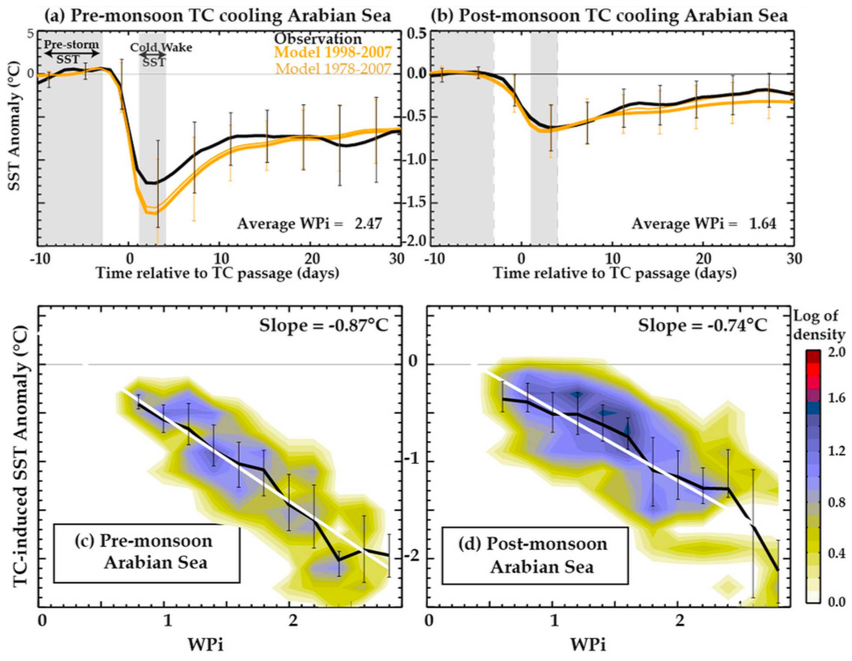Influence of oceanic stratification on tropical cyclones-induced surface cooling in the Bay of Bengal
Abstract
Surface cooling induced by tropical cyclones (TCs) is about three times larger during premonsoon than during postmonsoon season in the Bay of Bengal. We investigate processes responsible for this seasonal contrast using an ocean general circulation model. The model is forced by TC winds prescribed from an analytic vortex using observed TC tracks and intensities during 1978–2007. The simulation accurately captures the seasonal cycle of salinity, temperature, and barrier layer in this region, with fresher waters, deeper upper-ocean stratification, and thicker barrier layers during postmonsoon season. It also reproduces the three times larger TC-induced cooling during premonsoon than during postmonsoon season. This difference is essentially related to seasonal changes in oceanic stratification rather than to differences in TC wind energy input. During the postmonsoon season, a deeper thermal stratification combined with a considerable upper-ocean freshening strongly inhibits surface cooling induced by vertical mixing underneath TCs. On average, thermal stratification accounts for ∼60% of this cooling reduction during postmonsoon season, while haline stratification accounts for the remaining 40%. Their respective contributions however strongly vary within the Bay: haline stratification explains a large part of the TC-induced cooling inhibition offshore of northern rim of the Bay (Bangladesh-Myanmar-east coast of India), where salinity seasonal changes are the strongest, while thermal stratification explains all the cooling inhibition in the southwestern Bay. This study hence advocates for an improved representation of upper-ocean salinity and temperature effects in statistical and dynamical TCs forecasts that could lead to significant improvements of TC intensity prediction skill.


